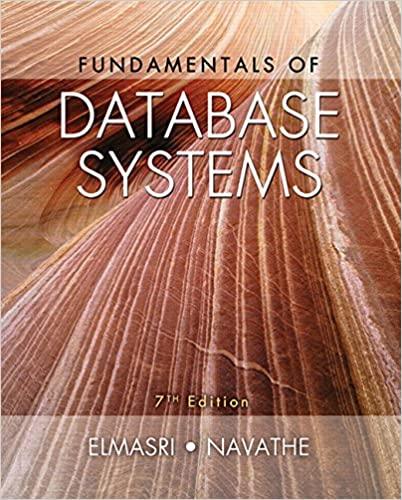Answered step by step
Verified Expert Solution
Question
1 Approved Answer
Consider the relational schema R(A, B, C, D), and the dependencies AB C, BD, C A, and D A. (a) (3p.) Is the relation

Consider the relational schema R(A, B, C, D), and the dependencies AB C, BD, C A, and D A. (a) (3p.) Is the relation in BCNF? If not, prove this by counting the closures, and then use the decomposition algorithm until all the relations are in BCNF. Document each step and prove that the decomposed relations are in BCNF. (b) (2p.) What functional dependencies hold in the new relations? (c) (1p.) List for each relation which attributes form the minimal key. 9. (4p.) Consider the relational schema R(A, B, C, D, E, F) with functional dependencies AE CF, B F, C B, CDE A, and F DE. Prove that the relation is not in BCNF and use the decomposition algorithm to break it to relations that are in BCNF. Document all the steps and reason why the resulting relations are in BCNF.
Step by Step Solution
★★★★★
3.43 Rating (156 Votes )
There are 3 Steps involved in it
Step: 1
Solution Given Schema RABCDEF Set of functional dependencies B D AB C AB E AB F AC F ACE D AEF B AEF ...
Get Instant Access to Expert-Tailored Solutions
See step-by-step solutions with expert insights and AI powered tools for academic success
Step: 2

Step: 3

Ace Your Homework with AI
Get the answers you need in no time with our AI-driven, step-by-step assistance
Get Started


